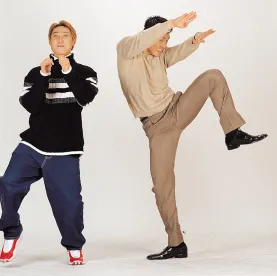Music and dancing go hand-in-hand. But what happens when concertgoers and bar patrons are injured? Who is at fault: the patron or the venue? Unfortunately for business owners, it is usually the venue that is held responsible. But two recent cases demonstrate that there are exceptions to the rule.
The first involves a claimant who attended a hardcore rock concert by a band called the Crumbsuckers at B.B. King's Blues Club and Grill in New York's Times Square. With most rock concerts involving this type of band, a form of dancing known as moshing almost always occurs. Moshing involves individuals jumping up and down and off of each other, often violently, and the area where moshing occurs is known as a "mosh pit."
Prior to the Crumbsuckers taking the stage, several other heavy metal and punk rock bands performed. The claimant admitted that during the opening acts, he observed people moshing in front of the stage. Although the claimant admitted to dancing in mosh pits on at least 30 occasions prior to the night in question, he denied participating that night. He did, however, stand directly in front of the mosh pit, facing the stage, during the main act's performance. It was during this time that the claimant was kicked from behind by one of the moshers, causing him to injure his left leg.
In a motion to dismiss, B.B. King's argued that the claimant assumed the risk of his injury when he knowingly placed himself in close proximity to the mosh pit. To the contrary, the claimant's attorney argued that his client could not be found to have assumed the risk since he never participated in moshing. The court ultimately dismissed the action, holding that whether or not the claimant participated was irrelevant, as he admitted that he was familiar with this type of dancing and knowingly placed himself in close proximity to it, resulting in his injury.
Another example involves a tourist who sustained an injury while dancing on top of a bar. This particular venue was known for entertaining customers by having its staff wear costumes while dancing on the bar and encouraging patrons to do the same. Here, the claimant was injured after she slipped and fell while dancing on the bar. She admitted that she climbed up on the bar voluntarily. She also admitted that although she recognized that there was a possibility that she could fall, she was not concerned or nervous.
The bar moved to dismiss the action on the grounds that the claimant assumed the risk of her injury. In opposition, the plaintiff's attorney argued that the act of dancing was not an activity for the purposes of the doctrine of assumption of risk. The court disagreed, finding that the plaintiff, who knowingly and willingly stood on top of the bar to dance, assumed the risk of slipping. Therefore she was barred from recovery.
Although both claimants were denied recovery, a proprietor should keep in mind that escaping liability in a premises matter on assumption of risk is an exception -- not a rule. As a business owner, one of the most difficult decisions to be made is weighing the risk of allowing an inherently dangerous activity against the benefits it will provide in terms of establishing a climate to attract clientele.
One option might be to pass on the liability to another entity. For example, a venue could enter into an indemnification agreement with a punk rock band that encourages moshing. Ultimately, the proprietor has the final word on the accepted conduct of its patrons and has the ability to limit its liability exposure by enforcing rules of conduct without detracting from the entertainment. But if you dance with the devil, know that you might get burned.
-----------
Authored by: Carmen A. Nicolaou, Esq.
Carmen A. Nicolaou, Esq., is counsel at Havkins Rosenfeld Ritzert & Varriale, LLP in New York.



 />i
/>i
